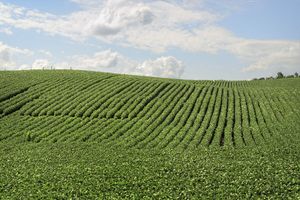USDA Aims to Stabilize Food Prices by Expanding Double-Cropping Opportunities
 To reduce the risk of raising two crops on the same land in one year – a practice known as double cropping – USDA’s Risk Management Agency (RMA) is expanding double crop insurance opportunities in nearly 1,500 counties where double cropping is viable.
To reduce the risk of raising two crops on the same land in one year – a practice known as double cropping – USDA’s Risk Management Agency (RMA) is expanding double crop insurance opportunities in nearly 1,500 counties where double cropping is viable.
See maps for where expanded opportunities for soybeans and sorghum are located.
Key improvements include:
>> For soybeans, double crop coverage will be expanded to or streamlined in at least 681 counties, including all of those that were initially targeted for review. While some additional counties were permanently added to be double crop counties, the majority of expansion removed barriers such as requiring production records and streamlined the process to get personalized coverage through a written agreement.
>> For grain sorghum, double crop coverage will be expanded to or streamlined in at least 870 counties that were initially targeted for review. Similar to soybeans, most of these changes included streamlining the administrative burden and requirements to obtain written agreements. Written agreements provide the producer with the maximum flexibility by allowing them to obtain crop insurance coverage, but not requiring the coverage of both the spring and winter crops as in permanent double crop counties.
>> RMA will also work with the crop insurance industry and farm organizations to highlight the availability and improvements in written agreements as an option for any farmer that grows a crop outside the area where a policy is automatically offered.
This expansion of coverage was guided by extensive outreach to nearly 70 grower groups covering 28 states. This includes a wide array of stakeholders such as producers, agents, university extension and other agricultural experts, commodity associations, state departments of agriculture and insurance companies. USDA may add additional counties as it explores these options with farmers this summer, with the final rules being locked in by the fall. Since farmers need to plan ahead for adding a winter crop to a rotation, USDA wanted to make sure they had time to consider this option and consult with local extension and agriculture experts and their crop insurance agent.
